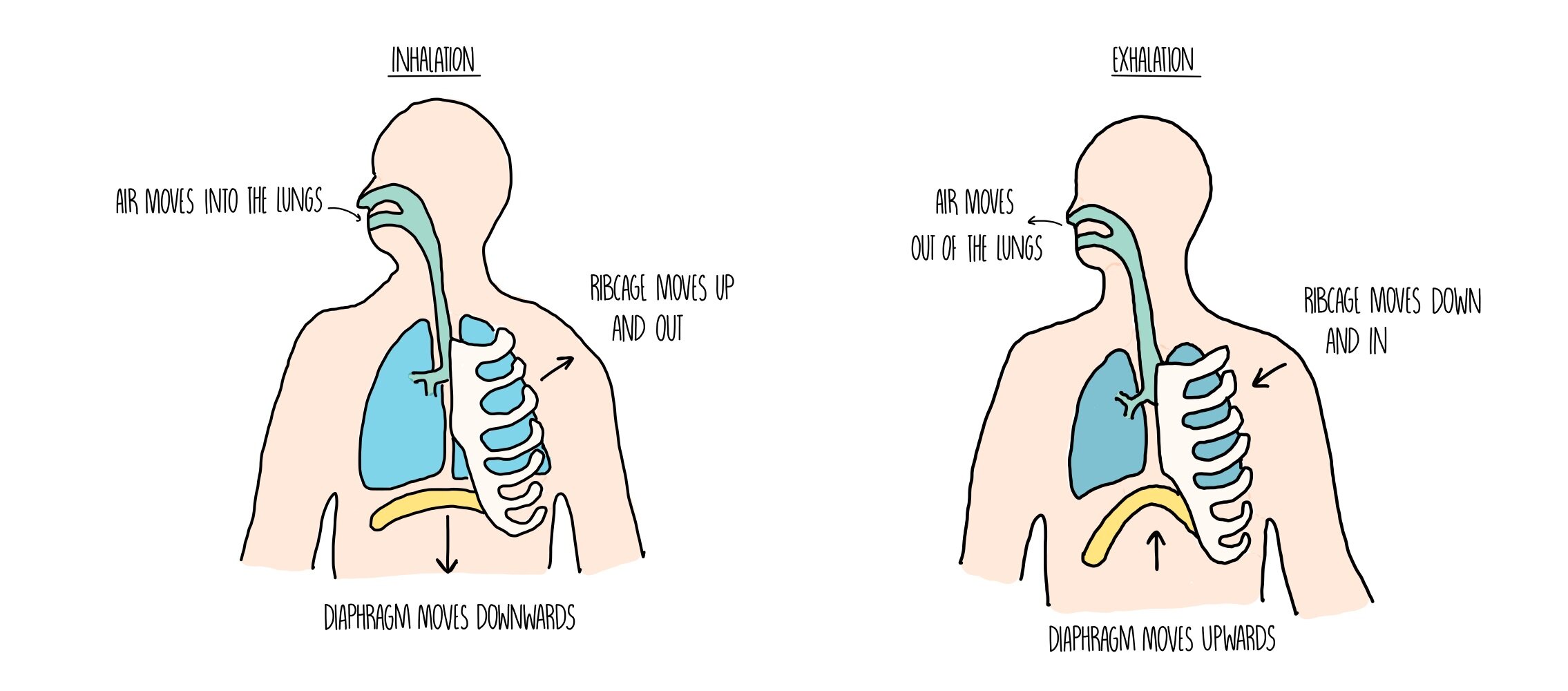Gas exchange in humans
Because humans are so big and bulky, with a rubbish surface area: volume ratio, we can’t rely on simple diffusion to supply the oxygen and remove the carbon dioxide generated during respiration. Therefore we need a respiratory system, a highly specialised and effective way of taking in oxygen and removing carbon dioxide during gas exchange.
Respiratory system
When we breathe, air enters our bodies through our nose and mouth and makes its way past the larynx and down the trachea. The trachea branches into two smaller tubes, called bronchi, which send air to each lung. The bronchi divide into even smaller tubes called bronchioles which finally send the air into air-sacs called alveoli. The alveoli look like a bunch of grapes and it’s this structure where gas exchange takes place. Oxygen diffuses from a region of high concentration in the alveoli to a region of low concentration in the bloodstream, where it travels to different tissues of the body and is used for respiration. Carbon dioxide travels in the other direction, from a region of high concentration in the bloodstream to a region of low concentration in the alveoli, where it travels up the trachea and is breathed out.
The lungs themselves are surrounded by the pleural membrane, a moist membrane which forms an airtight seal around the lungs. The rib cage protects the organs of the respiratory system and are surrounded by intercostal muscles, which move the rib cage during breathing to help bring air into or out of the lungs.
Adaptations of the alveoli
Each alveolus are adapted to make gas exchange as efficient as possible:
Large surface area: there are approximately 700 million alveoli in our lungs with a combined surface area of 70 square meters.
Good blood supply: lots of capillaries surround each alveolus
Short diffusion distance: the walls of both the alveoli and capillaries are just one cell thick
Moist surfaces: the liquid on the surface of alveoli dissolves gases and facilitates diffusion
Inhalation & Exhalation
During inhalation, the diaphragm contracts and flattens, while the rib cage moves up and out. This increases the volume of the thorax, resulting in a drop in pressure. The reduced pressure causes air to be sucked into our lungs.
During exhalation, the diaphragm relaxes and forms a dome shape, while the rib cage moves down and in. This reduces the volume of the thorax and increases the pressure, pushing air out of our lungs.
Smoking
Cigarettes contain nicotine, tar and carbon monoxide, which all have a harmful effect on our body. Nicotine is the addictive substance in tobacco and is responsible for the cravings smokers feel when trying to stop smoking.
Chemicals in cigarette smoke damage cilia lining the trachea, preventing their ability to shift mucus. The mucus can start to clog the airways, resulting in smoker’s cough. Smoking also causes inflammation of the bronchi and can cause a disease known as bronchitis. In addition, chemicals in cigarettes can break down the walls of the alveoli, reducing the surface area available for gas exchange and causing emphysema.
Smoking also puts a strain on the heart as it increases the carbon monoxide concentration of our blood. Carbon monoxide binds to haemoglobin instead of oxygen, so our heart needs to pump faster to deliver the same amount of oxygen to our cells. This increases the risk of coronary heart disease and stroke.
Finally, the chemicals in cigarettes are carcinogens (cancer-causing substances) which are able to mutate DNA. This can lead to the formation of a tumour in our lungs, mouth and throat.
Did you know..
Just like us, this incredible mow-hawked turtle uses its lungs for gas exchange. But it has another trick up its sleeve, in that it can breathe through its genitals. This Mary River turtle lives in streams of Australia and has recently been listed as an endangered species.
Image credit: Chris Van Wyk
Download worksheet: Gas Exchange in Humans / Answers Next Page: Transport in Humans

